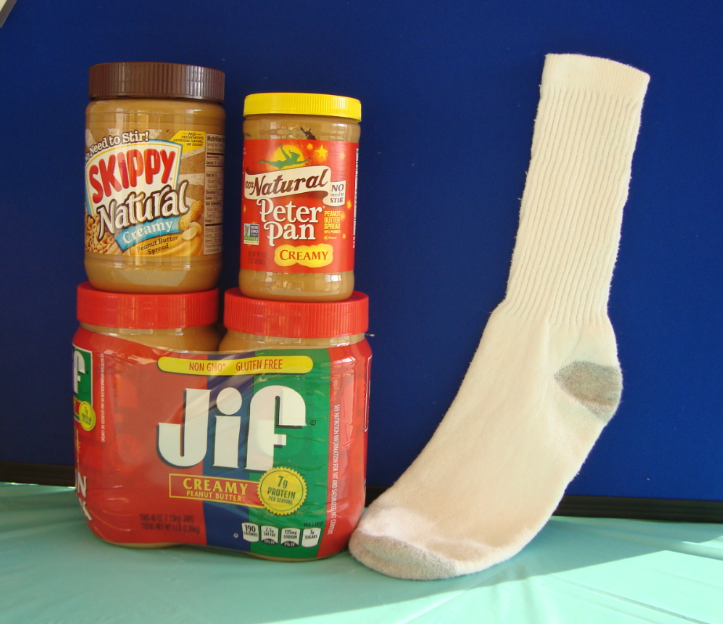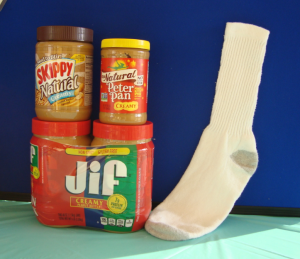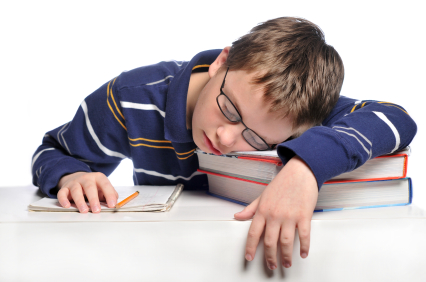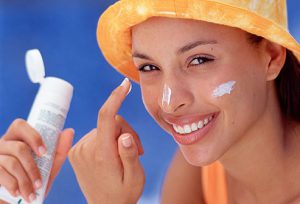
by sbouie | Nov 16, 2016

Photo credit: www.thailandblog.nl
Maybe you know someone in your family, a friend, or a co-worker that has diabetes. Diabetes affects not only the person but the entire family. This article will discuss the types of diabetes and symptoms. Education concerning diabetes begins at home. Once we are educated, we can teach our family and the younger generation.
Type 1 diabetes is usually diagnosed in children and young adults and was previously known as juvenile diabetes. Only 5% of people with diabetes have this form of the disease. In type 1 diabetes, the body does not produce insulin. The body breaks down the sugars and starches you eat into a simple sugar called glucose, which it uses for energy. Insulin is a hormone that the body needs to get glucose from the bloodstream into the cells of the body.
Type 2 diabetes is the most common form of diabetes. If you have type 2 diabetes, your body does not use insulin properly. This is called insulin resistance. At first, your pancreas makes extra insulin to make up for it. But, over time, it isn’t able to keep up and can’t make enough insulin to keep your blood glucose at normal levels.
Gestational Diabetes – During pregnancy, usually around the 24th week, many women develop gestational diabetes. A diagnosis of gestational diabetes doesn’t mean that you had diabetes before you conceived or that you will have diabetes after giving birth. However, women who’ve had gestational diabetes have a 35 to 60 percent chance of developing type 2 diabetes in the next 10 to 20 years after giving birth.
Some common symptoms of diabetes include urinating often; feeling very thirsty; feeling very hungry – even though you are eating; extreme fatigue; blurry vision; cuts/bruises that are slow to heal; weight loss – even though you are eating more (type 1); tingling; pain; or numbness in the hands/feet (type 2).
Food selection is a key element of living with diabetes. It is easy to find diabetes cookbooks and recipes online to assist in adjusting your diet. It is easy to find a list of starchy vegetables to avoid as well as other foods that should be eliminated from one’s diet.
Exercise also is a very important factor when living with diabetes. A good exercise program along with a proper diet will help decrease your risk of diabetes.
Source: American Diabetes Association

by Angela Hinkle | Oct 19, 2016
 It’s that time of year: going to Friday night football games, decorating with pumpkins, welcoming in some cooler weather, and harvesting our locally grown peanuts and cotton. This also means it’s time for the Peanut Butter Challenge. We collect jars of unopened peanut butter throughout the Northwest Panhandle of Florida through November 23rd. (Contact your local UF/IFAS Extension office for details and peanut butter drop-off sites.)
It’s that time of year: going to Friday night football games, decorating with pumpkins, welcoming in some cooler weather, and harvesting our locally grown peanuts and cotton. This also means it’s time for the Peanut Butter Challenge. We collect jars of unopened peanut butter throughout the Northwest Panhandle of Florida through November 23rd. (Contact your local UF/IFAS Extension office for details and peanut butter drop-off sites.)
Peanut butter is a locally grown (okay, we don’t actually grow peanut butter, but we do grow the peanuts that make peanut butter), protein packed, tasty food that is safe to eat and store at room temperature. For these reasons, it is one of the most requested items at food pantries. After Thanksgiving, we will distribute to food pantries and organizations that give food to hungry families in need.
Okay, so what role do socks play in this? Cotton, another great locally grown agricultural product, is used to make socks. And even though UF/IFAS Extension does not have a “Sock Challenge,” the homeless and limited-resource families are often in desperate need of new white socks. There are plenty of shelters and schools who would really appreciate donations of clean new socks – any time of year.
So…Peanut Butter and Socks – they really are the Florida Panhandle’s perfect combination!

by Marie Arick | Jul 29, 2016
![Sleeping_boy_at_desk_with_books[1]](https://nwdistrict.ifas.ufl.edu/fcs/files/2016/07/Sleeping_boy_at_desk_with_books1-300x199.jpg) Are your school kids getting enough sleep? With the new school year starting and routines being established, are things going smoothly? If you are sleep deprived, then the chances are your children may be sleep deprived as well. The following is an excerpt from the University of Michigan Health System:
Are your school kids getting enough sleep? With the new school year starting and routines being established, are things going smoothly? If you are sleep deprived, then the chances are your children may be sleep deprived as well. The following is an excerpt from the University of Michigan Health System:
School-aged children still need somewhere between 9 and 12 hours of sleep at night. At this age, kids usually start a trend toward becoming more and more sleep deprived. As the parents, you will need to help figure out how much sleep your child needs. Your child is getting the right amount of sleep if they:
- Can fall asleep within 15 to 30 minutes.
- Can wake up easily at the time they need to get up and don’t need you to keep bugging them to get up.
- Are awake and alert all day, and don’t need a nap during the day. Check with your child’s teacher and make sure your child is able to stay awake and alert during school.
In other words, if your child can go to bed, fall asleep easily, wake up easily, and not be tired during the day, then they’re probably getting enough sleep.
So, does your school-age child fit this bill? Obviously, the younger the child, generally, the more sleep they require. The amount of sleep required does vary from person to person, regardless of age. Are you aware that sleep deprivation is linked to poorer school outcomes as well as some behavioral and emotional problems? Adequate amounts of sleep for children (and adults, too) lead to healthier outcomes and better productivity.
Some simple steps to help your child to establish a better sleep routine is to set a bedtime and a ritual that cues the child that he/she is preparing for bed. Providing the appropriate environment to indicate to the child it is time to sleep is also important. Keeping the mood calm and relaxed can aid in allowing the child to unwind. Other hints include avoiding television one hour prior to bedtime, dim lights about two hours prior to bedtime, and limit or eliminate your child’s consumption of caffeinated beverages, such as soda and tea. The ideal bedroom setting is dark (a night light is ok), comfortably cool, quiet, and with few stuffed animals on the bed. If getting the bedtime ritual established is proving difficult, do not vary your waking times in the mornings, regardless if it is the weekend. Establishing and enforcing the waking time is easier to manage and will lend itself to eventually aiding in the establishment of a solid bedtime ritual. Teenagers and weekends will prove more challenging. But as parents, we are able to discuss sleep habits and the negative effects of sleep deprivation with them to allow them to participate more actively in improving their own sleep habits and become more responsible young adults along the way.
Remember, people in general need different amounts of sleep and the best way to determine if a child (or adult, for that matter) is sleep deprived is to ask the following questions the UMHS staff research has established:
- Does your child fall asleep in the car almost every time you drive with them?
- Do you have to wake your child up almost every morning?
- Does your child seem overtired, cranky, irritable, aggressive, over-emotional, hyperactive, or have trouble thinking during the day?
- On some nights, does your child “crash” much earlier than their usual bedtime?
A “yes” answer to any of the above can be an indication of sleep deprivation according to UMHS. It truly is a health benefit for your child to be well rested every day and this can be achieved with a good sleep routine.
Check out the University of Florida IFAS fact sheet to help address sleep needs for teens. Another great resource is the National Sleep Foundation.
Sweet dreams!
by jbreslawski | Jun 11, 2016
 In Florida, we are so lucky to have access to beautiful beaches and weather. There are an infinite number of outdoor activities to do. This past week I tried a new one for me, SUP (Stand Up Paddle boarding). I fell a few times, but finally found my balance and had a blast all day long. Things changed though when the fun was over and I realized that I forgot to wear a hat and had a blistering burn on my scalp. According to the Center for disease control the sun can burn unprotected skin in as little as 15 minutes. In order to protect yourself from the sun be sure to apply and reapply sunscreen (at least SPF 15) regularly, stay in the shade, wear a hat and UV protective sunglasses, when possible protective clothing such as long sleeved shirts and pants, and limit time outdoors in peak sun hours of 10am-4pm.
In Florida, we are so lucky to have access to beautiful beaches and weather. There are an infinite number of outdoor activities to do. This past week I tried a new one for me, SUP (Stand Up Paddle boarding). I fell a few times, but finally found my balance and had a blast all day long. Things changed though when the fun was over and I realized that I forgot to wear a hat and had a blistering burn on my scalp. According to the Center for disease control the sun can burn unprotected skin in as little as 15 minutes. In order to protect yourself from the sun be sure to apply and reapply sunscreen (at least SPF 15) regularly, stay in the shade, wear a hat and UV protective sunglasses, when possible protective clothing such as long sleeved shirts and pants, and limit time outdoors in peak sun hours of 10am-4pm.
Oh, so you don’t need to because you tan? Well think again. esides leaving you with an awful burn, blisters and flakey skin, sitting out in the sun can cause lines and wrinkles, sun-spots, and increase your chance of skin cancer. The American Cancer Society is estimating 6,200 new cases of skin cancer, this year, in Florida alone. Most of these cases can be linked to too much sun exposure. Regular sun protection can reduce the risk of developing skin cancer; regular dermatologist skin checks and self-exams can help identify cases early. The Skin Cancer Foundation, recommends keeping watch for individual moles that are misshapen, have uneven borders, a variety of colors, a diameter of over ¼”, or have changed in any of these features. This summer have fun, live in the moment, try something new, but don’t forget your SPF.

by Shelley Swenson | May 19, 2016

You may not need coats and your yard may not have these leaves but finding fun and creative ways to engage children in exercise is important. You can consider yourself successful if they have fun doing so without knowing they are meeting physical activity recommendations by participating in at least 60 minutes of moderate or vigorous physical activity on all or most days of the week.
This is the time to start planning for your children’s summer while they enjoy time at home or at alternative settings from school. Insure they are active to optimize their health.
Being physically active has both mental and physical health benefits. The majority of the benefits becomes apparent in adults because this is the time in which health problems surface. However, risk factors and symptoms for chronic disease may begin as early as childhood, especially in obese children. In addition, physical activity can reduce stress, anxiety, and feelings of depression. Being active improves self-esteem, self-efficacy, and mood and promotes the feeling of overall wellness.
Everybody is short on time, even in the summer. Many people don’t believe they can meet the recommendations for physical activity every day. The good news is that it doesn’t all have to be done at once. Physical activity can be accumulated throughout the day for the same health benefits.
Inactive children are much more likely to be inactive adults. Children who have active family members and who regularly do activities with them are more likely to be active compared to children who do not come from active families.
As you plan your summer, consider how many of these physical activities could become family activities: walking briskly, biking, weight training, yard work, gardening, dancing, golfing, or playing hop-scotch, four square, or active games with running and chasing.
Making physical activity fun with the family can make the time pass by quickly. Finding time to be active together is important for families who want to live a healthy lifestyle.
For more ideas for staying active as a family, check out Raising Healthy Children: Family Fitness and Raising Healthy Children: Active Families.

by Amy Mullins, PhD, RDN | May 19, 2016
 Do you ever feel that burning, uncomfortable, and often painful feeling in your lower chest, sometimes spreading to the throat after eating? Most of us have experienced heartburn (acid reflux) at some point in our lives, dismissing it with “I’ve eaten too much again.” It’s not uncommon and is actually a normal process, with most occurrences being brief and not too bothersome. However, heartburn, or acid reflux, can become a serious issue if it’s a recurring problem.
Do you ever feel that burning, uncomfortable, and often painful feeling in your lower chest, sometimes spreading to the throat after eating? Most of us have experienced heartburn (acid reflux) at some point in our lives, dismissing it with “I’ve eaten too much again.” It’s not uncommon and is actually a normal process, with most occurrences being brief and not too bothersome. However, heartburn, or acid reflux, can become a serious issue if it’s a recurring problem.
Gastroesophageal reflux disease (GERD) occurs when the esophagus (the tube in your throat that food travels through to reach your stomach) becomes damaged from stomach acid, often a result of a weak or leaky trapdoor (sphincter) connecting the esophagus and stomach. People who experience heartburn at least two times a week may have GERD.
The most common symptoms are:
- Heartburn
- Regurgitation
- Chest pain
- Trouble swallowing (dysphagia)
Other symptoms may include:
- Stomach pain
- Painful swallowing (odynophagia)
- Persistent laryngitis/ hoarseness
- Persistent sore throat
- Chronic cough, new onset asthma, or asthma only at night
- Regurgitation of foods/fluids; taste of acid in the throat
- Worsening dental disease
- Recurrent lung infections (pneumonia)
- Chronic sinusitis
Complications can be very serious and can include bleeding ulcers, blockages of the esophagus, permanent lung problems, and even esophageal cancer. It’s important to discuss symptoms with your doctor and devise a treatment plan.
Some factors that may contribute to GERD include:
- Pregnancy
- Overweight
- Alcohol use
- Smoking
- Certain medications that delay the emptying of the stomach after a meal
Your doctor may recommend some of the following lifestyle changes to improve symptoms:
- Eat a low-fat diet (avoid fried foods)
- Avoid certain foods that may worsen the problem (excessive chocolate, caffeine, peppermint, spicy foods, raw garlic and onions, tomato-based foods, and citrus fruits)
- Lose weight, if overweight
- Avoid alcohol
- Stop smoking
- Eat smaller meals
- Drink liquids between meals instead of with meals
- Wear loose-fitting clothes
- Avoid lying down, straining, or bending over following meals
- Raise the head of your bed by 6 to 8 inches (place wooden blocks under bedposts)
If you are concerned that you may have more than just the occasional “heartburn,” talk to your healthcare provider. It’s important to alleviate symptoms that could lead to more serious complications.
References:
https://www.nlm.nih.gov/medlineplus/gerd.html
http://www.niddk.nih.gov/health-information/health-topics/digestive-diseases/ger-and-gerd-in-adults/Pages/overview.aspx






![Sleeping_boy_at_desk_with_books[1]](https://nwdistrict.ifas.ufl.edu/fcs/files/2016/07/Sleeping_boy_at_desk_with_books1-300x199.jpg)



